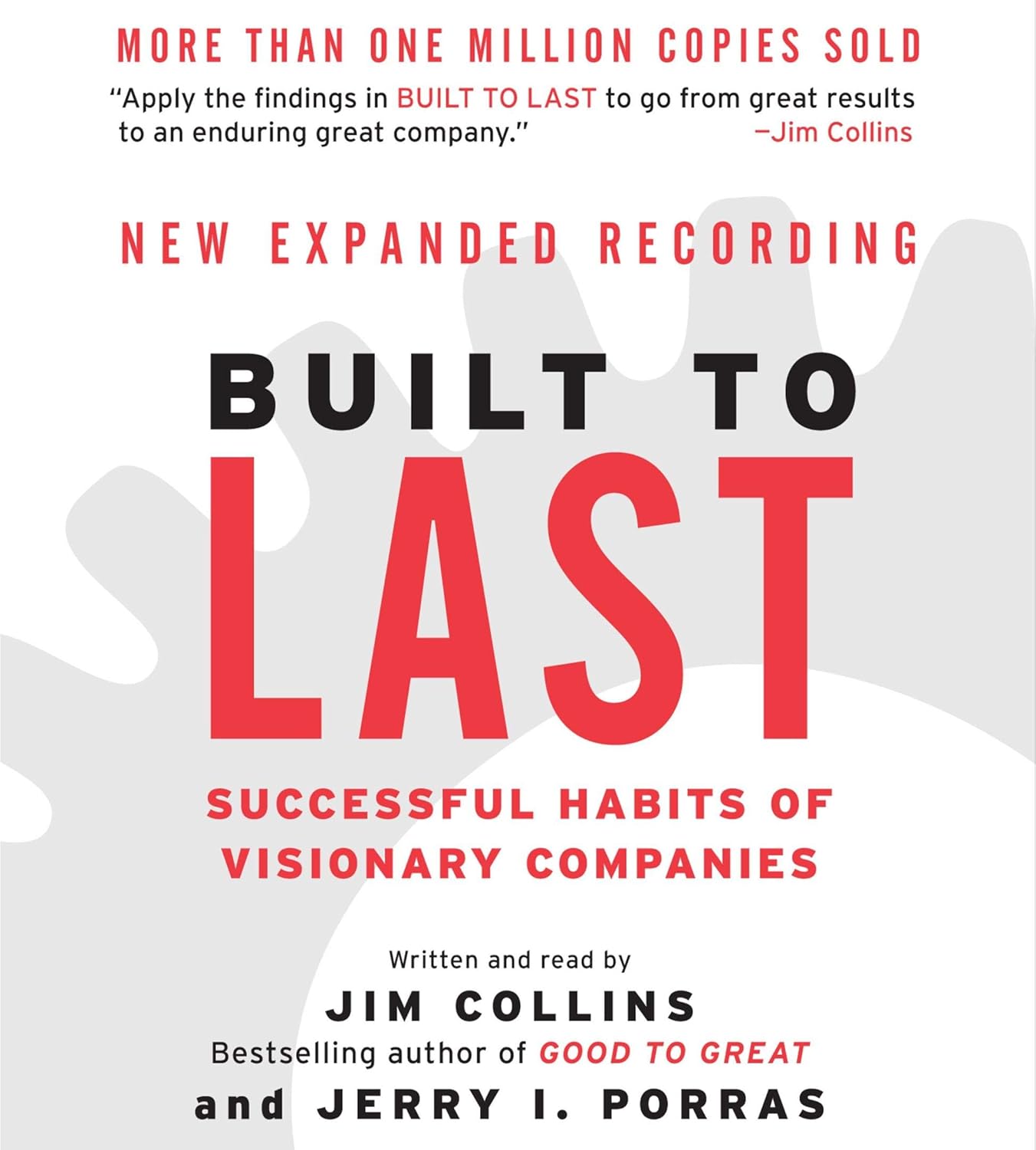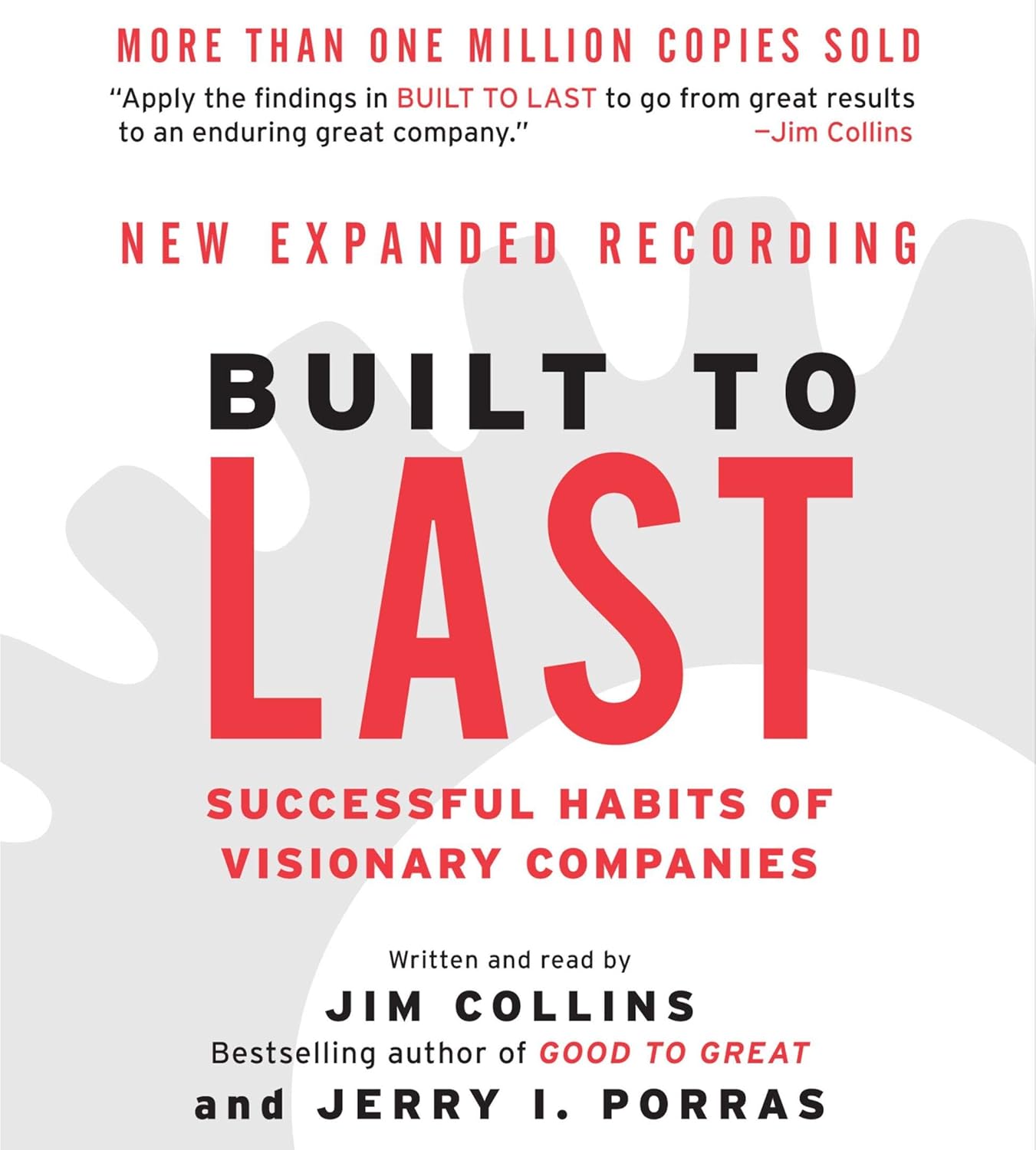I’d been hearing about Built to Last by Jim Collins and Jerry Porras for some time and finally decided to pick it up. As someone who enjoys business literature and seeks practical insights to apply in the real world, I was intrigued by its premise. The book promised to reveal the qualities that have allowed certain companies to thrive and endure over the decades. Given my interest in long-lasting business strategies, I was excited to dive in.
One of the standout aspects of this book is the rigorous research that underpins it. Collins and Porras conducted a six-year study at the Stanford University Graduate School of Business, directly comparing 18 exceptional companies to their competitors. This empirical approach provided a compelling foundation for their findings. The authors effectively highlight key characteristics that distinguish truly visionary companies from rivals. This aspect aligns with what I believe many readers appreciate—its practical insights and the detailed exploration of these enduring organizations.
Several positives stood out to me as I flipped through the pages. One of the book’s main strengths is its readability; it’s filled with rich examples that illustrate concepts clearly. A review from cbfreeman aptly described it as “far different than the usual business book” and a “must-read.” I would agree—Collins and Porras manage to present complex ideas in a digestible way, making it engaging for both managers and budding entrepreneurs.
Another strength is their idea of “Preserve the Core and Stimulate Progress,” which resonated with me deeply. This concept emphasizes the importance of maintaining core values while continuously innovating to adapt to changing environments. As Benjamin Rossen noted, the book provides answers to the “what” but leaves some questions on the “why.” While I found this lack of depth somewhat noticeable, I still appreciated the emphasis on ethical standards, core competencies, and the balance between continuity and change.
However, not everything was perfect. A drawback that I encountered, which echoed thoughts from other readers like Pretty, is that the book can be somewhat dense at times. While the thoroughness of the research is admirable, I occasionally felt bogged down by the extensive details. I found myself wanting to stay engaged, but there were moments where the intricacies became overwhelming. The book is certainly packed with valuable lessons, but there were times when I had to push through sections to extract the core ideas.
Additionally, while Collins and Porras successfully identify many common practices of visionary companies, I felt that certain areas could have used more robust analysis. Rossen’s point about the need for a deeper exploration of the “why” behind some principles stuck with me throughout my reading. For instance, the assertion that it doesn’t matter what a company’s ideology is, as long as it is passionately believed by its employees, seemed a bit overly simplistic to me. I believe the effectiveness of an ideology should indeed align with the company’s strategic goals, rather than rely solely on passion.
In conclusion, Built to Last largely met my expectations as a compelling and practical guide for anyone interested in business longevity. While it presents valuable insights into what makes companies successful over the long term, a few sections could have benefited from a more analytical lens. If you’re looking for a book that combines empirical research with applicable concepts, I highly recommend it. Just be prepared for some dense reading along the way. If you can navigate through the hefty details, the core principles discussed in this book are undeniably enlightening. Overall, this book earns a solid 4.5 stars from me—it’s an essential read for leaders, managers, or anyone interested in building something that truly lasts.








